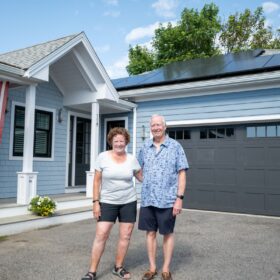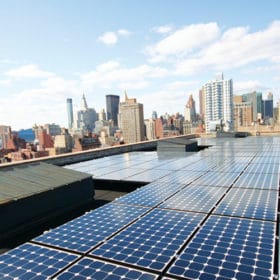An unfortunate reality for the solar industry is that as more solar goes online, it wipes out mid-day demand, shifting peak to later in the day. As this continues, net mid-day demand gets lower and the gap between mid-day demand and evening demand gets steeper, leading to a phenomenon described as the duck curve. This issue is addressed in Smart Electric Power Alliance’s (SEPA) 2018 Utility Demand Response Market Snapshot.
A traditional school of thought has been to alleviate this curve by rolling out mass-usage of short-term battery storage, coupled with the use of demand response programs, which incentivize electricity users for reducing consumption during times of peak demand. According to SEPA, while only 2.4% of utilities are currently using demand response to alleviate grid fluctuation in areas with high renewable energy penetration, 24% have plans for future implementation and another 54% are considering adding it as well.
While demand response is all well and good for reducing peak demand, the issue of curtailment still remains due to the fact that demand response addresses peak demand rather than peak load time realignment. And it what may seem ironic to solar proponents, Arizona Public Service (APS) has found itself on the forefront of progressive energy policy, through a process SEPA refer to as reverse demand response. Reverse demand response is based upon the model that APS introduced in their Demand Side Management Plan for 2018. The idea is to incentivize shifting as much of the peak load as possible to peak production times. This is an especially critical measure for western utilities, when the duck curve can lead to instances of negative energy prices.
APS outlines that the energy provided by their form of reverse demand response would be free, saying:
This pilot will work with qualifying non-residential facilities to identify opportunities for dispatching loads in response to negative pricing events… Customers would identify beneficial but non-essential loads that could be operated in response to an event signal. These loads would be sub-metered and provided with no-cost energy during these event periods. This pilot provides load flexibility to help address duck curve challenges and reduce the need to curtail solar during periods of negative pricing, responsiveness that puts a downward pressure on all customer rates. To be eligible, the dispatchable customer load must have a demand of at least 30kW.
APS has coupled this with the implementation of new time-of-use (TOU) rates, which uses the idea of demand response in energy price determination, as SEPA outlines in the graphic below.

Large-scale adoption of reverse demand response has been identified as a realistic form of load shifting by SEPA, a critical element to… curtailing curtailing. And while a much larger national scale of load shifting may require more comprehensive programs, free energy isn’t the worst place to start.
This content is protected by copyright and may not be reused. If you want to cooperate with us and would like to reuse some of our content, please contact: editors@pv-magazine.com.









Not to complain, but any article about the ever growing excess of PV generation midday MUST address the huge opportunity we have to steer EV charging to “at your place of work and shopping” and thus mid-day. Duke Energy here in NC is touting a new low-cost meter-grade controllable circuit breaker that will vastly reduce the cost of EV charging infrastructure for parking lots of all sorts, but their focus is on nighttime charging obviously to assure they can use the excess nuclear power they have (and growing) at night. This same technically optimally applied to the duck curve will move EV charging to the right time of day for “overall system-wide optimization” and let us charge all our EVs (and we will all have EVs soon!) at the time when truly free PV power is available while the sun is up.
It is not valid in today’s world to write about the issues of the duck curve and the need for batteries and shifting demand without including the FACT that charging the growing and growing number of EVs midday is a solution that we must be applying. It will take this industry-driving input from writers like you and PV Mag to steer the utility industry in the correct direction for an optimum solar and wind powered future.
EVs and hot water production were the only things I could think of that could be aligned for a residential customer. Of course, most daytime EV charging would be at work, so non-residential.
How much help can interconnectors be in this regard?
I read recently that China is planning (probably means its finished by now) a 5000 kilometre DC connector from west China to Europe. Obviously there will be losses but what is the loss per kilometre of a high power high voltage DC cable?
Would copper or Aluminium be the preferred conductor?
The time difference between Urumqi in west china and Vienna is 6 hours so the peak generation time can be matched to the peak consumption time.
Has anyone got the vaguest idea of the capital cost of a 5000km 1GW DC link?
Graham
Would copper or Aluminium be the preferred conductor? Aluminium hands-down. Copper may be a better conductor on a cross-section basis, but aluminum is better on a weight (mass) basis. Most aerial HV cables are ACSR, aluminum conductor steel reinforced, with a steel core providing the tensile strength to support the cables between towers.
Another area that is change is time shifted air-conditioning. Systems exist that can store “cold” in the AC unit so it can just run off the fan outside of the solar window.